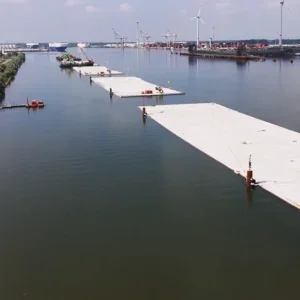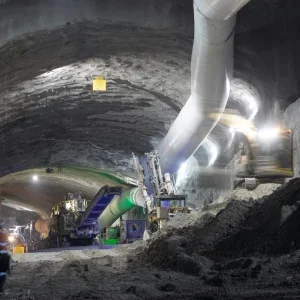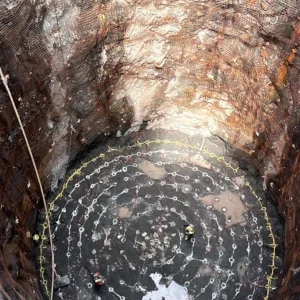The stunned reaction of most of the world to the terrorist attacks in the US can hardly go without comment, even in this specialist publication. Events were broadcast to our offices and homes in real time, bringing a sickened feeling to all. But, what, you may ask, have such a terrible events got to do with tunnelling?
Within the tunnelling world the likely sectors to be affected, directly or indirectly, include business prospects, design and security of underground space and provision of emergency services. The full effect on the commercial world, and so the tunnelling business, cannot yet be assessed. Hopefully, the nature of most underground construction projects will allow them to ‘ride out’ the economic turbulence. In the future there may be a change in bias towards deeper, rather than taller, structures.
The most important lesson for us is perhaps the need for vigilance, to combat complacency and to plan for the unexpected. Underground space is not, literally, a high profile terrorist target, as with the World Trade Center or Pentagon, and may not present much terrorist publicity value. But, the importance of international tunnel transport links still demands adequate attention to security.
Failings are revealed all too often by dangerous incidents, and impromptu ‘checks’ by story-seeking journalists and politicians. Equally worrying is the number of asylum seekers who can pass through the Channel Tunnel with comparative ease.
As information emerges from the New York rubble, nearby metro (subway) stations have reportedly suffered collapse damage and, in particular, flooding from fire-fighting and broken water mains. We could speculate on the need for better drainage, emergency power supplies, and better escape routes and signing from underground space. Despite the tragic losses of the firefighters and NYPD, New York emergency services appeared sufficient. In other cities, however, coverage and numbers have been reduced, cutting supposed ‘slack’. Yet, by their nature, good emergency services require some ‘slack’ for adequate service, plus specialist skills for underground needs.
Directly involved in the emergency include familiar names such as Parsons Brinckerhoff (PB), Arup, and Amec. PB, headquartered on Manhattan for 116 years, has been affected by the tragedy on a personal level, but as a company has offered assistance to the emergency recovery services, and local and transport authorities. PB offices were back at work the day after the disaster and staff efforts still resulted in contributions to this issue of T&TI, despite everything. Arup, already involved n subway work in New York, is engaged in structural survey and stabilisation work on many of the affected buildings.
Last, but certainly not least, may we add T&TI’s voice to those praising the heroism of emergency workers, transport officials and all those who saved and aided others during the terrible events of last month? Those who work underground tend to have a special empathy with those who, while aware of present danger, can set those thoughts aside to help others, whether or not it is their duty.







